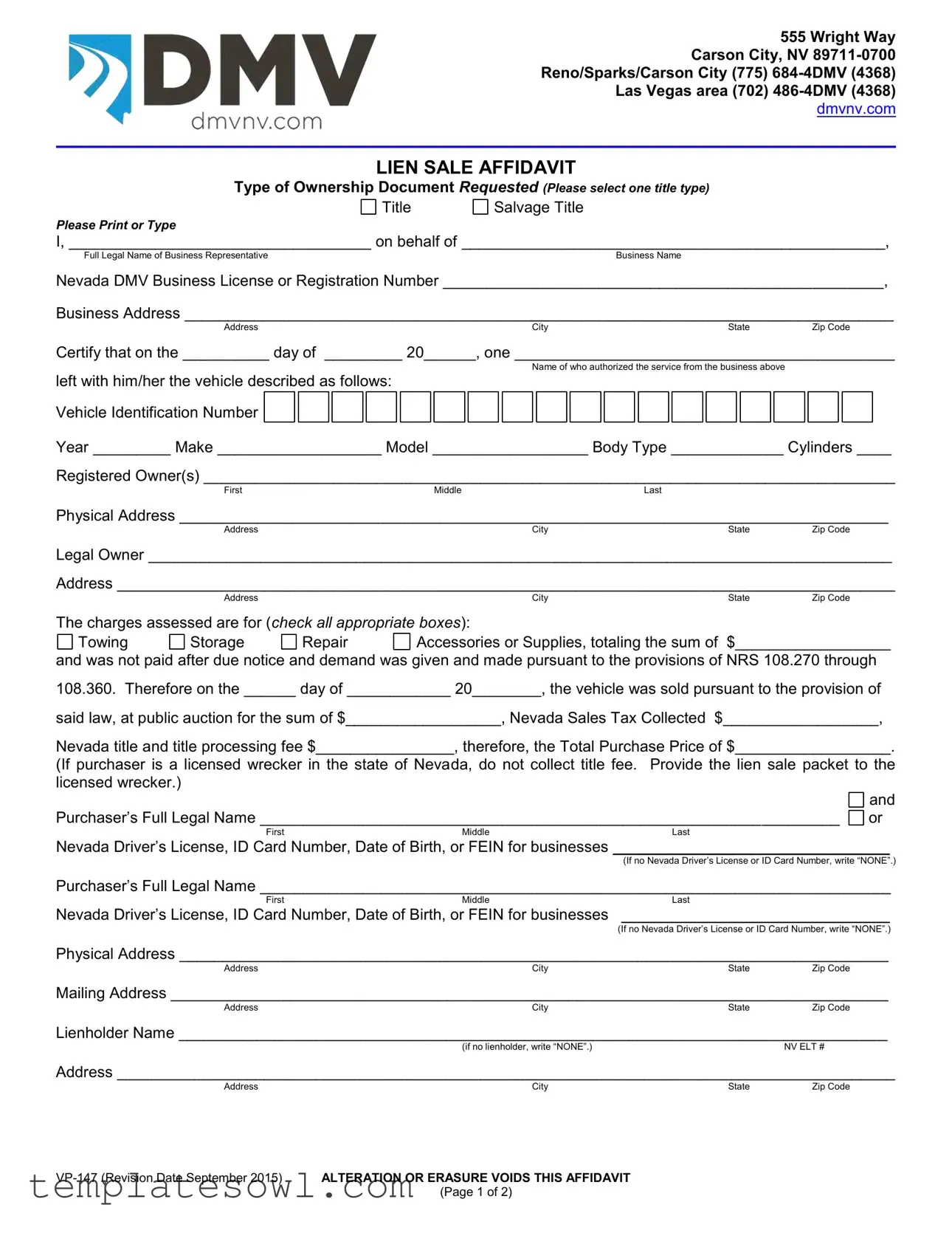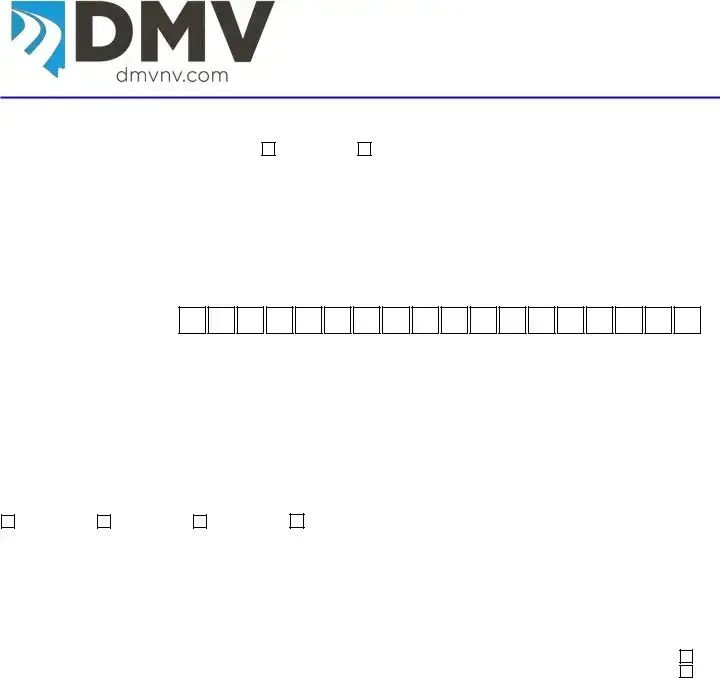555 Wright Way
Carson City, NV 89711-0700
Reno/Sparks/Carson City (775) 684-4DMV (4368)
Las Vegas area (702) 486-4DMV (4368)
dmvnv.com
LIEN SALE AFFIDAVIT
Type of Ownership Document Requested (Please select one title type)
Please Print or Type
I, ___________________________________ on behalf of _________________________________________________,
Full Legal Name of Business RepresentativeBusiness Name
Nevada DMV Business License or Registration Number ___________________________________________________,
Business Address __________________________________________________________________________________
AddressCityStateZip Code
Certify that on the __________ day of _________ 20______, one ____________________________________________
Name of who authorized the service from the business above
left with him/her the vehicle described as follows:
Vehicle Identification Number
Year _________ Make ___________________ Model __________________ Body Type _____________ Cylinders ____
Registered Owner(s) ________________________________________________________________________________
FirstMiddleLast
Physical Address __________________________________________________________________________________
AddressCityStateZip Code
Legal Owner ______________________________________________________________________________________
Address __________________________________________________________________________________________
Address |
City |
State |
Zip Code |
The charges assessed are for (check all appropriate boxes):
Towing |
Storage |
Repair |
Accessories or Supplies, totaling the sum of $__________________ |
and was not paid after due notice and demand was given and made pursuant to the provisions of NRS 108.270 through 108.360. Therefore on the ______ day of ____________ 20________, the vehicle was sold pursuant to the provision of
said law, at public auction for the sum of $__________________, Nevada Sales Tax Collected $__________________,
Nevada title and title processing fee $________________, therefore, the Total Purchase Price of $__________________.
(If purchaser is a licensed wrecker in the state of Nevada, do not collect title fee. Provide the lien sale packet to the
|
licensed wrecker.) |
|
|
and |
|
Purchaser’s Full Legal Name ___________________________________________________________________ |
|
or |
|
First |
Middle |
Last |
|
Nevada Driver’s License, ID Card Number, Date of Birth, or FEIN for businesses ________________________________
(If no Nevada Driver’s License or ID Card Number, write “NONE”.)
Purchaser’s Full Legal Name _________________________________________________________________________
First |
Middle |
Last |
Nevada Driver’s License, ID Card Number, Date of Birth, or FEIN for businesses |
_______________________________ |
(If no Nevada Driver’s License or ID Card Number, write “NONE”.)
Physical Address __________________________________________________________________________________
AddressCityStateZip Code
Mailing Address ___________________________________________________________________________________
AddressCityStateZip Code
Lienholder Name __________________________________________________________________________________
(if no lienholder, write “NONE”.)NV ELT #
Address __________________________________________________________________________________________
Address |
City |
State |
Zip Code |


